
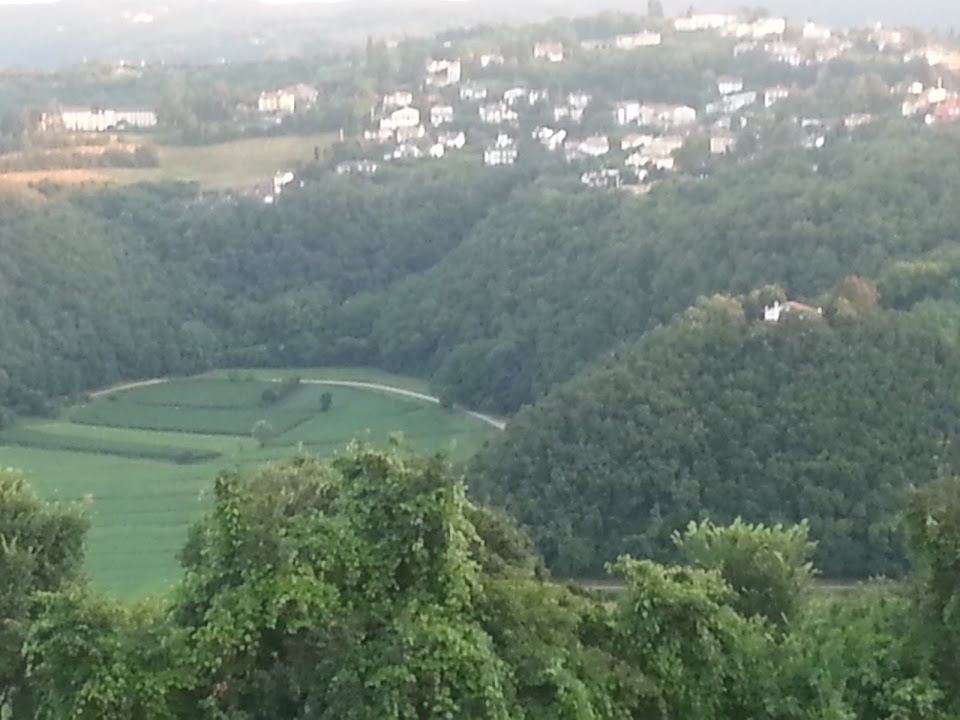
The largest and most spectacular amphitheater in the world was aquatic . Terminal bay formed in terraces where an ancient and calm and now tired sea at sunset: the Tethys which came to die here. It was the Sanctuary of the Ancient Venetians. The distrust on the part of the senatorial political class towards the theater was not entirely unjustified, since in Athens as in Rome theatrical performances were a source of rich political allusions. Even in the provisional theatres, protests occurred, especially in periods of greater political tension, such as in the years at the end of the Republic , characterized by continuous civil wars. This was the aspect that determined the destruction of the Sanctuary over 2000 years ago… And history repeats itself. As with Facebook today, it happened that retreats, religious pilgrimages and shows became the pretext for demonstrations by the public, who somehow felt legitimized by the strength of their numbers to express their feelings of criticism or approval without much ceremony. In 101 AD it was still the exclusive property of the Sabina Vicentina family. the Empress of Vicenza who married Hadrian. The emperor reproduced the main elements for her in her residence. What we are able to give a face to today through the countless coins found here among its 130 terraces and of which the officials responsible for the local Superintendence are the institute which in Italy, when not distracted by political pressure, should protect the assets cultural and archaeological.
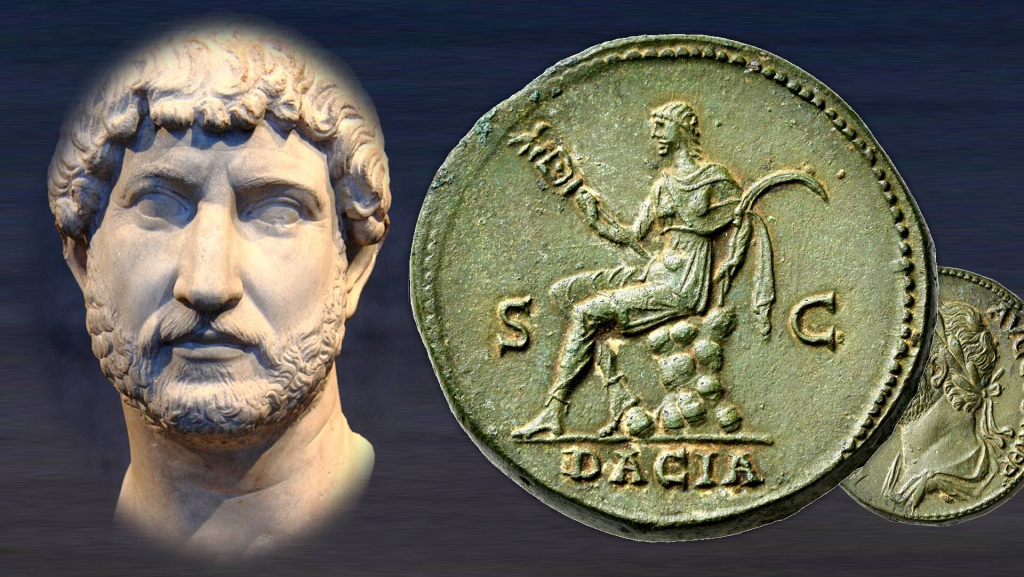
Near Tivoli, Ariano will reproduce his home by inserting all the elements encountered under the seat of the Magister of the Sabina family of Villa di Arcugnano Capoluogo.

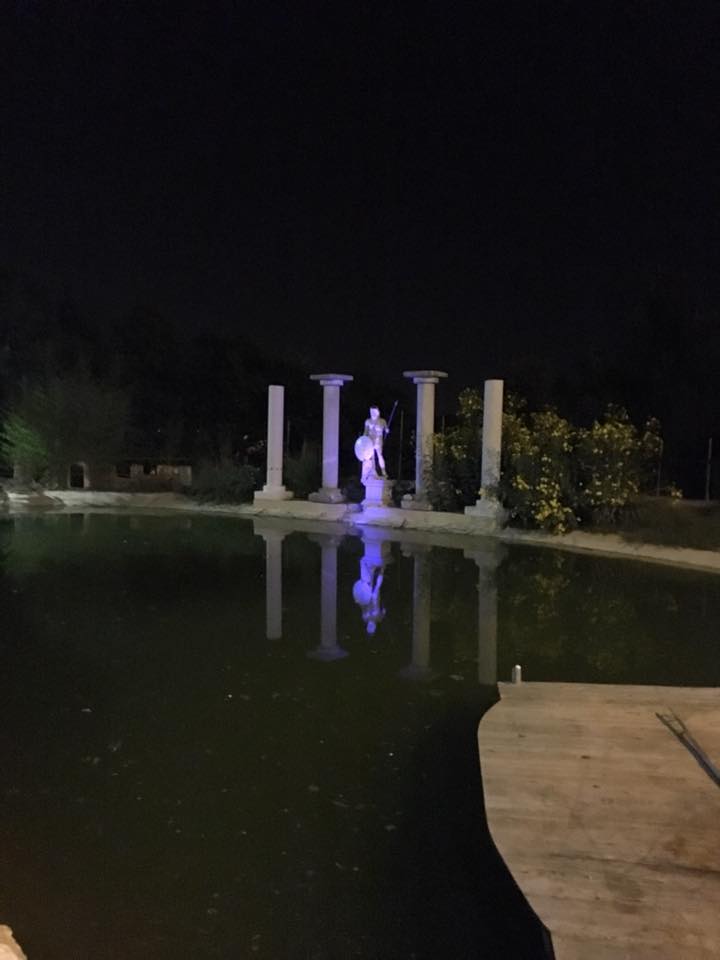
The Christian controversy against the shows dealt the final blow until 1997. Since that year, what we can see, through unspeakable sacrifices supported by prof. Maurizio Tosi and his team, we owe it to them. In 2016, together with the discovery of that of Pietrabbondante, Tusa and later Volterra, the mutilation of its summit and the lower terraced Cavea part of the Sanctuary was returned to the community. Today it has become forested.
FROM 394 AD TO THE MIDDLE AGES. THE TEMPLARS AND JULIET – Taking care of the health of his pelvis and hatches were 11 Templar knight brothers managed by Adalbert Lorenz (Romeus Pellegrino) from Heilbroon. Having escaped to avoid being burned due to the edict of Philip the Fair, anarchy returned to the places in 1307. The lake has remained alone and defenseless ever since. In 1500 the withdrawal of the waters was reported by a prelate visiting the Templar tower and the former pagan temple (which is half-buried just above the church now owned by the Mioni Sisters, owners of the Papadopoli Wollemborg private archive). The water, as in Diana’s curse , rots and stagnates. The slow death of the Great Lake of Vicenza begins. Then the darkness. Amphitheaters and waters are described by Galileo and also by Palladio. But we need to wait for the rediscovery of neoclassicism by the Montanari family so that with teofilo the desire to take up those ancient motifs begins again.
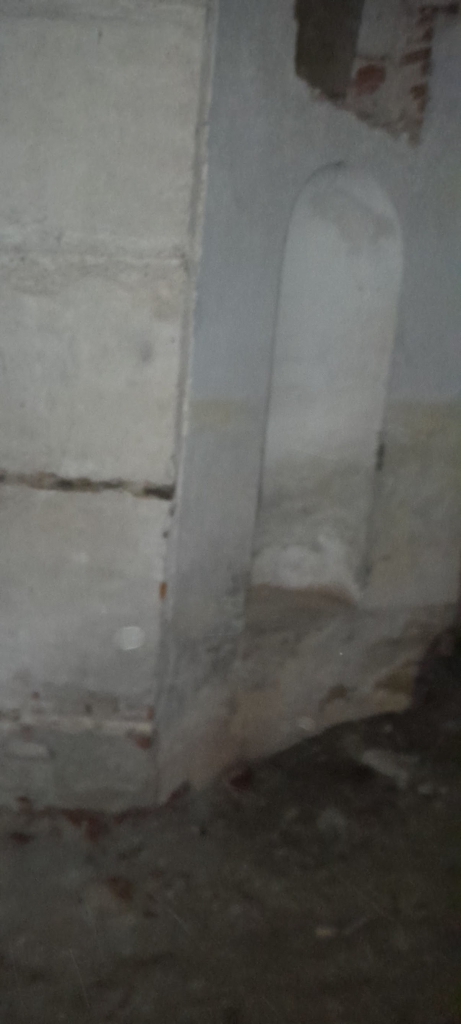
The private theater will be partially restored by the Querini family, the Colonna Princes and their curators, the Maltarello brothers, shipowners and primary curators also of the Olimpico theatre, another enchanting Vicenza theater designed by the architect Andrea Palladio. Its spectacular bay, of the former Sanctuary of the Villa of Arcugnano, the capital’s amphitheater, is well described by the English cartographer and spy Freya Stark , its lake ( today’s Fons Fontega ) the oldest in northern Italy, also included in the Austrian land registry of General von Zach , whose family is the court astronomer of Ernest II Saxson – Gotha – Altenburg (Windsor) was easily reachable only by river . At least until 1934, officers and general pilots landed and took up residence there. Among them some from the High Speed Department , including the Chief of Staff of the Royal Air Force Giuseppa Marini and the first Italian female aviator Elsa Marzotto Dalle Ore was the owner.
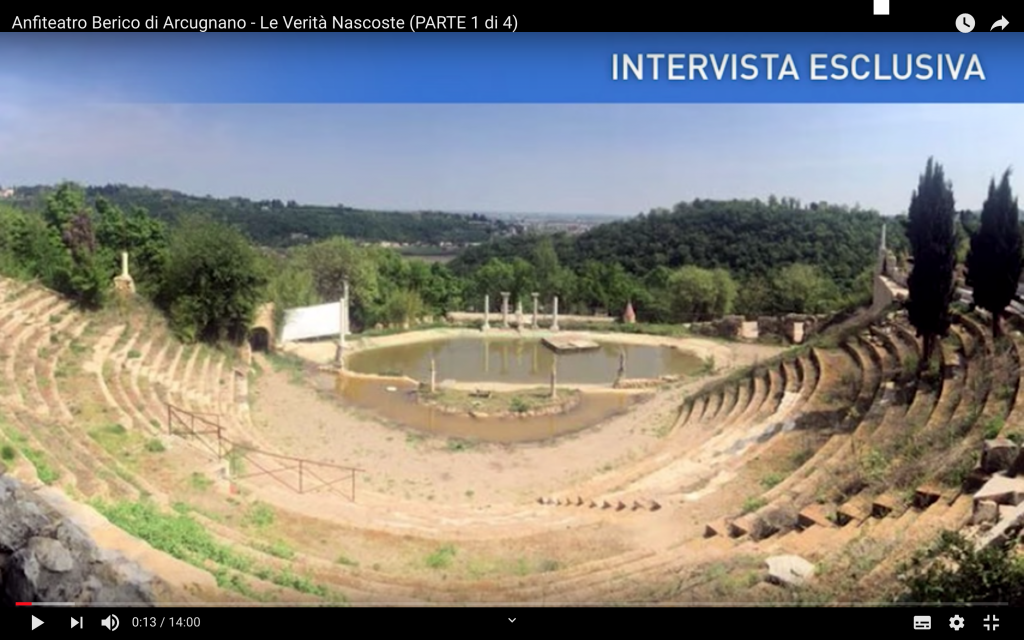
In terms of size it is the first open-air theater in the world , although its entirety dates back to before 393 AD. To this day, it has been heavily and definitively violated . Over the years, with the wicked policies undertaken by D. Manin to raise cash, thus ignoring provisions maintained both by the ” French plunderer ” Napoleon and by the Austrian Empire aimed at not exceeding the water/land ratio to profit from the large estates to the detriment of the lake environment, the Venetian politician initiated the systematic environmental destruction of the Berico maritime sanctuary . And it is with this drying up of the waters which generally lasts for 11 months a year that today we can see what remained of the Sanctuary on the ‘enormous ” Liebestod bay” as described by the German composer Richard Wagner. Since 1934 only the large terraced theater of the Querini has survived. In 2002, the construction of 11 illegal villas built on its summit was granted. Interventions financed by traced money, extorted for kidnappings of entrepreneurs for the benefit of others, locals. Banknotes paid to the laborers of the building contractor and the alleged killers of Falcone & Borsellino, Piddu Madonia. who during the preparation of the massacres in Bagheria as well as at the Amphitheater lived in hiding protected in his Venetian villa. took the top of the Amphitheatre. This intervention, following the Querini one, significantly reduced its dimensions, altering the view from the top of the “ Archeo – Agno ” hill, i.e. from the Villa of Arcugnano . In 1970, to recover it first, then to the change of powers put in place to mitigate an invasive intervention that compromised the protected landscape view, institutional elements connected to the Italian Mafia were spent. Among them, while the trial was underway in the Borsellino misdirection, during a heavy extortion against the professor’s staff. Maurizio Tosi, even some journalists, functional supporters, in external mafia competition, devoid of any competence and evidence, accepted the task of ” fabrication” the news which, like Stonehenge , the Bosnian Pyramids – ìMedjugorje at the heads of Modigliani etc., almost as if it were a publicity stunt, in short, a ” hoax “.“. Instead, they were images found to be falsified by a functional flanker. She was the municipal technical manager. To mislead the work of preservation of the Conservator of Places by criminalizing the use of criminal associations with others, so as to mislead the Municipal Conservator of unauthorized activity instead of the true concessionaire of the illicit ones paid to the Mayor who facilitates the laundering of extorted money to kidnapped entrepreneurs from Vicenza. Subsequent investigations revealed that the building contractor who directed his workers here, Piddu Madonia, was not aware that the mayor had illegally authorized the works. The total damage suffered by the historical-cultural sector of Vicenza, I still calculate, is around 1,2,000,000 euros.
In terms of size, the Berico Amphitheater precedes the Great Ancient Theater of Epidaurus , however the Berico Amphitheater was not actually born as an amphitheater or theater , but as a Sanctuary . Until the great earthquake of 1117 it was included between the two escarpments. That of Monte Giove and the Capnist (or De Capnist ) hill (Noble family who migrated to Vicenza from the Russian-Ukraine in 1916) and settled here on the Punta della Dama Nera del Fons, the lake of the Berico Amphitheater (Lake Fontega).

The sanctuary , which was a pilgrimage destination at least until the end of the 1300s, could have accommodated more than 50,000 spectators. However, the smell of horse excrement which, for example, at the Teatro alla Scala in Milan gave the image of the flow of visitors, has never characterized the Berico theatre. Not because people didn’t come here, on the contrary, the beauty of this theater is that the small circle of Venetian aristocracy reached it by boat .

At the port of angels that surrounded the Fontega it docked silently. No clatter of carriages. Rinsing of boats only. It was confirmed as a theater with an ideal setting for private performances where Richard Wagner, with the help of the Orchestra delle Fabbrica Reale Maltarello, rehearsed his Liebestod of him but in the research collected by the prof. Remo Schiavo did not lack performances dedicated to melodious themes as with Debussy , in Luigi Maltarello’s performance of ” La cathédrale engloutie ” rehearsals of Aureliano Pertile, the tenor of Arturo Toscanini, after the senator Antonio Fogazzaro, penultimate administrator of the Maltarello Rosenfranz- Piano- fabrik its dock you walked up the short path that led to the theater terraces. The expression “a lot of shit ” typical of actors and still today synonymous with success and fortune for them because it means a lot of audiences arriving in carriages whose horses left excrement, was not realistic here given that in front of this theater there were no carriages parked with their horses, but boats. This was the case until the Second World War. With Lord Byron ‘s travels, travelers began to tour the world again. The English took over the area again in 1916 and it should be noted that they witnessed three sporadic shows here on its terraces.

THE TWO BERICI SANCTUARIES
The SANCTUARY OF THE ANCIENT VENETIANS IN THE FORMER BAY OF THE BERICO AMPHITHEATER arose well before the nearby Sanctuary of Monte Berico (former temple of Apollo and Diana) . Located in Villa di Arcugnano Capital. According to Galileo Galilei it was the best known work among those lost, created in captivity by the Spartans of Prince Cleonymus . The Berico Maritime Amphitheater is unique and unsurpassed for the superb surround that comes from being aquatic and is the largest open-air theater in Vicenza as well as in the world . Its dimensions, its island, the former temple of Ogno-Agno-Giano , which later became a castle which overlooks it oriented towards the rising of the sun or towards Orgiano ( from where the sun originates coming from the Euganean hills overlooking the territories of God Janus )-Lumignano ( a point that enjoys a spectacular view, from where, first of all, the sun illuminates the territory of the God Janus ) certainly represent one of the most fascinating monuments also for the extraordinary position dominating the terraced bay, that of its lake oldest in northern Italy, a mysterious basin, that of the son of Janus, the God Fons . With its body of water that appears and disappears , the current Fontega. The theater served as a fundamental Cosmic Clock for calculating the solstices and equinoxes essential for the harvest. Oriented to Orion’s Belt . The alignment is also perceptible to the visitor who scrutinizes the stars from the astronomical observatory above the Celtic mountain “Cucco”,

it is located on the path from Padua to Este (the town halfway between Vicenza and Padua which gave rise to the Royal blood of all the European Courts) to Vicenza for the Euganeo Berica coast where an ancient and tired sea, the Tethys, came to die . The surviving part of the amphitheatre, once reachable only by river, still has a breathtaking natural scenic structure unique in the world capable of surprising the spectator. For some, penetrating the beauty of the terraced structure can instill feelings of fear as can be seen in the description given by the memoirist Count Guido Piovene . To the navigators who once dropped anchor and then ascended the Sanctuary of the ancient Venetians it appeared truly gigantic, monumental and spectacular.
These places were once consecrated to the Garden of the Goddess of nature: Diana.
Click here if you want to discover: The dark side of the two Berici Sanctuaries. “ Diana’s Curse ”

SPECTATOR CAPACITY Theoretically, with its 130 terraces, the sanctuary could gather an audience of 25,000 people and this fact makes it the largest theater in the world, doubling the Arena of Verona and the theater of Epidaurus. The surviving part today can accommodate 5,000 spectators .

PLANT DETAILS OF THE AMPHITHEATER “PORT OF THE ANGELS”

IN HISTORY, despite being a theater of uncommon beauty, of great significance and of strong emotional impact, it remained uncomfortably isolated from the center of that Vicenza which now flourished only behind the Berginus plain , the God who gave the name to the Berica Riviera. Every cyclical attempt to get him back on his feet was followed by abandonment. The population migrated and it was probably also for this reason that it did not remain in people’s memories. Then came the automobile and with it Joe Adonis .

If we investigate the period from the eighteenth to the nineteenth century we will discover that very few would have reached the theater by venturing in a carriage along the narrow path that wound along the ridge of the Berici hills. They were routes for experienced local coachmen, not for “foreigners”. This was the only private theatre, as it was customary to rediscover in those years, with the fortunate characteristic of being able to be reached by boat docking in the bay below where a pier had already existed since the Paleolithic era and where monoxyl pirogues were found in the peat; now they are no longer visible because they were incinerated by a phosphorus bomb in the last world war inside the Civic Museum of Vicenza to which, after being found, they had been entrusted by the CAI researcher Gastone Trevisiol (a sort of Pliny the elder for the unfortunate destiny).

From the same dock you went up to the small Quirniana island, the final destination of a pilgrimage remembered by the Templars, responsible for the lake’s gates and who hosted pilgrims there until 1307. In 1900 he was remembered by the star placed on the rose window (now missing) of the small Tormeno church. Rare photograph miraculously found. The amphitheater was a mystical place, especially before 394, known among artists, painters and refined lovers of sounds such as Giacomo Orefice, test driver of the Rosenfranz and director of the Verdi Conservatory . Here they met to concert for a lucky few, especially on the piano. Here a few guests could witness actual scenes of floating shows with fires from naumachia re-enactments.

No nobleman coming from Venice would ever have had the idea of reaching his Vicenza possessions on board a carriage. Much better by boat, as Richard Wagner also liked it. Docking at the dock below the Querini amphitheater was reserved for authorized, exclusive guests.
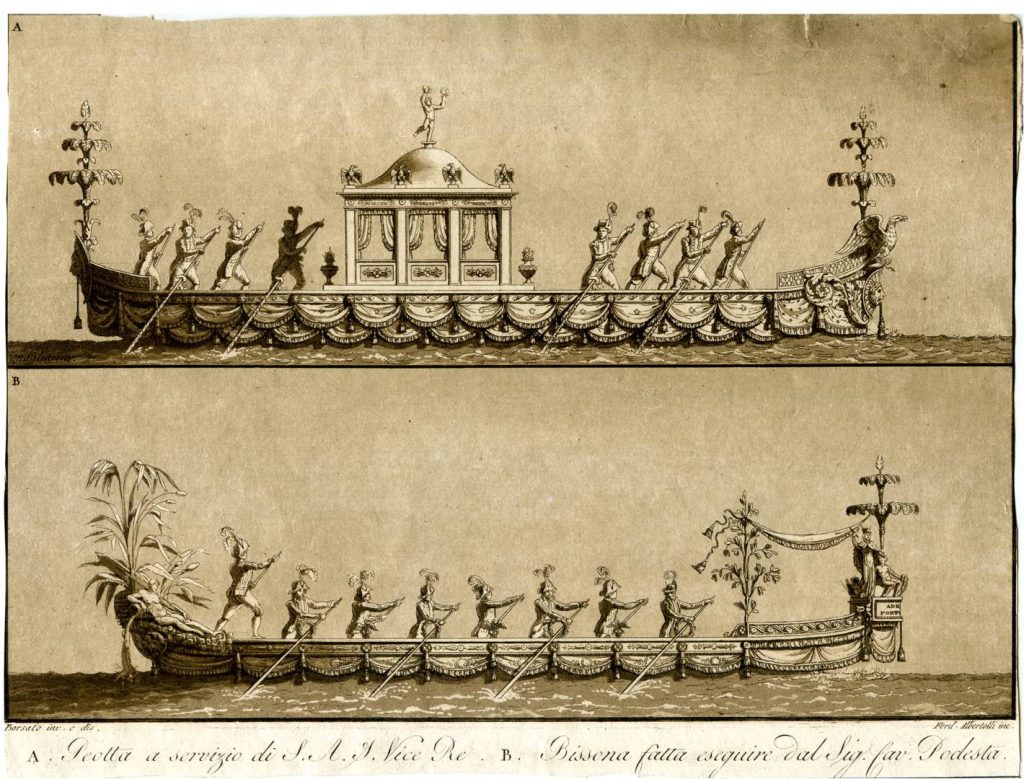
PRIVATE VESSEL MUSEUM, BECHSTEIN CINEHEKE – BECCE, THE LIBRARY Some boats can still be seen today beached and hauled up by winch. They rest in the weeds just below the medium auditorium of the terraced theatre. The winch connected to the mill was located between the two towers of the former Templar Commandery which give its name to the Villa of Arcugnano – Capital Amphitheater
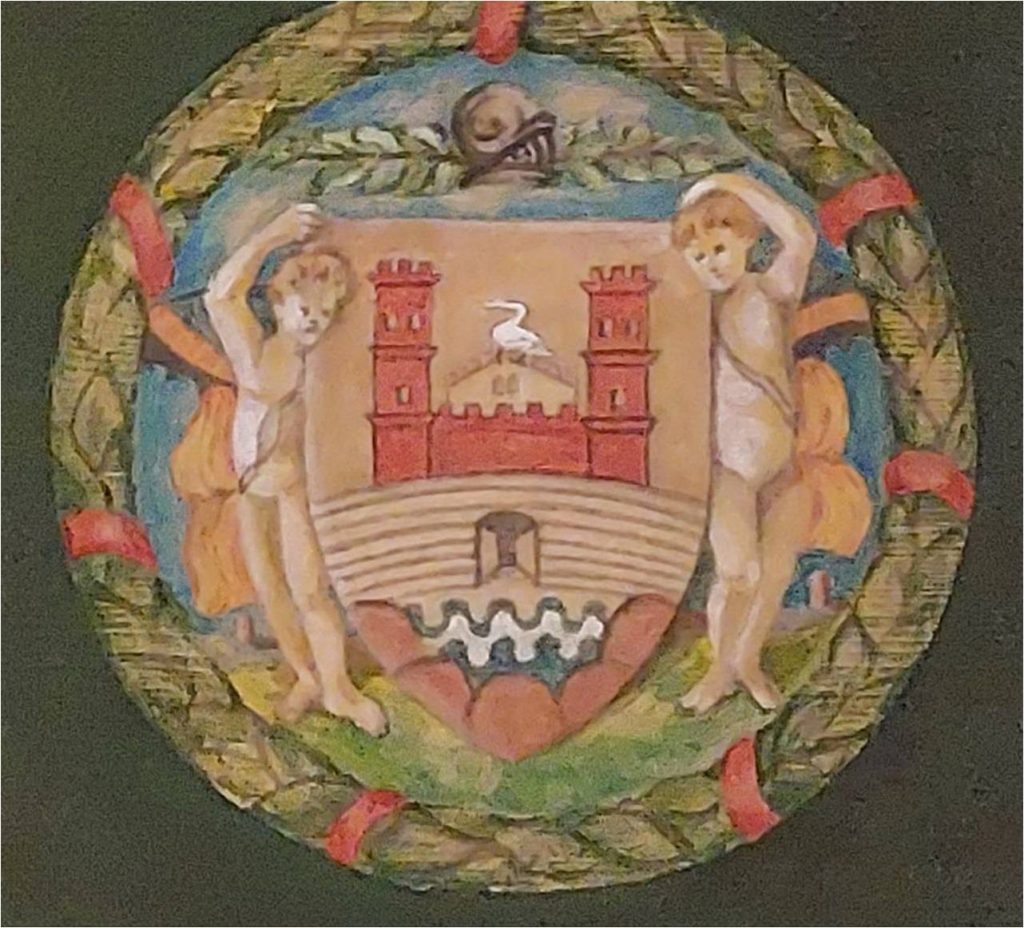

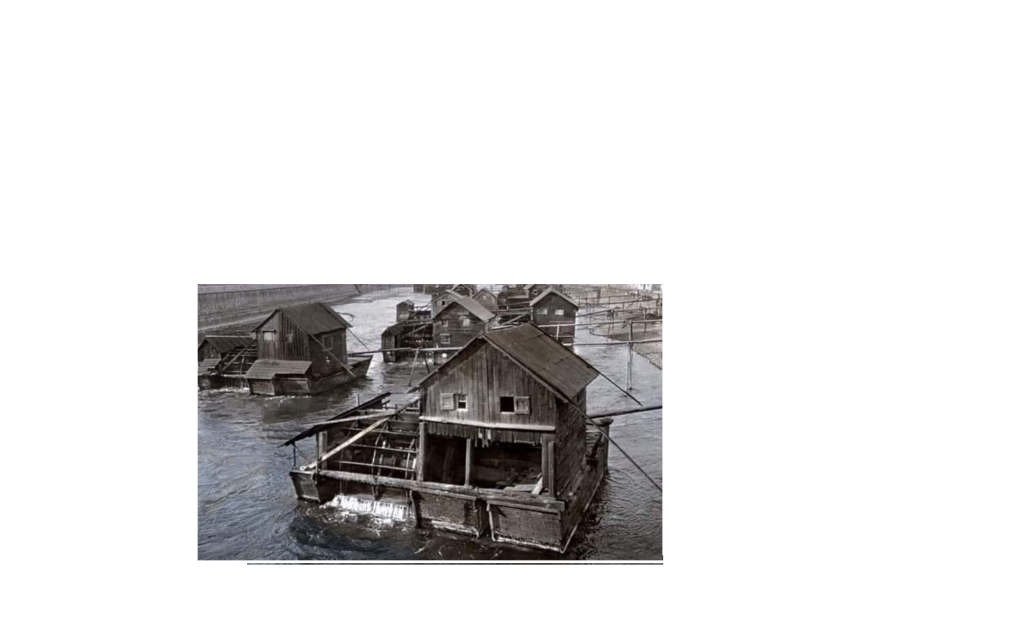
THE WINCH AND THE BECHSTEIN KINOTECH DONATED BY GIUSEPPE BECCE Upon analysis of the stones, the water must have flowed copiously from the Gioturna torrent, then via Fosso and finally, now renamed via Giardini which leads to door 8 of the theatre. A winch located there generated enough energy to hoist the boats out of the water and shelter them. From 1938 to today, it is still possible to see old silhouettes of boats that for centuries have plied the lake and its canals carrying couples from Vicenza to Venice. Protected by thick bush that has grown between the terraces, they rest near the remains of an enormous safe removed from Villa Montatari, dragged there and finally abandoned.
KINOTECH BECHSTEIN GIUSEPPE BECCE . The vast monumental complex of the Berico amphitheater houses the commandery of the Knights Templar with a rich library. There is also a historic film archive donated by Bechstein-Giuseppe Becce, where music lessons are still held today. The current direction is entrusted to Emma Falcone.

ON VAVIGATION IN 1800 Starting from Venice, navigation allowed the romantic reaching of the theater by stopping at all the “toll booths” and the stops, i.e. the “bridges ” (Mossano, Castegnero, Barbarano, Nanto, Longare, Debba…).

THE MARITIME AMPHITHEATER BERICO QUERINI – COLONNA DI ARCUGNANO CAPITAL TOWN remembered in the Sabir language as ” maritime” was a Sanctuary reachable from the sea through narrow canals that led to a mysterious bay . The terraces and basins of an imposing amphitheater oriented towards the constellation of Orion were reflected in its water. A little like those of Volterra and Tusa cited by various sources, both ancient and modern, his remains had however never been cataloged nor associated with the many findings until 1997 when the world-famous archaeologist prof. Maurizio Tosi , colleague of Sebastiano Tusa , after having come across exceptional documents found in archives in the ” Silk Road” , decided that he wanted to see clearly by delving into part of the effort spent to catalog the villas of the Province of Vicenza by the Olympic Academician Renato Cevese .
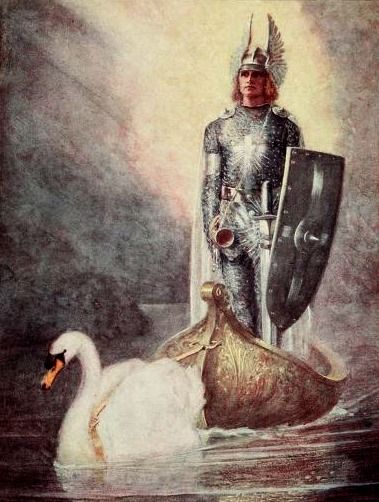
RICHARD WAGNER Not just Romeo and Juliet. Tristan and Isolde. The orchestra of the Royal Maltarello Factory rehearsed his Liebestod here. Today the beauty of such concert and acting work can be seen in Piccadilly Circus in London with Webber’s aquatic masterpiece: The Phantom of the Opera.
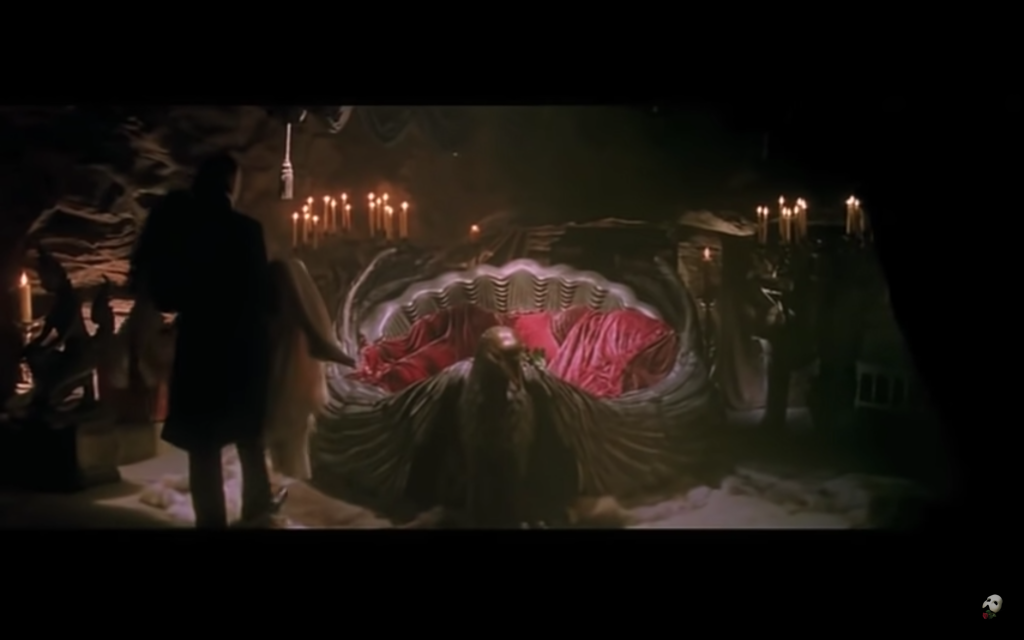
During navigation, when the fog forced the boats to slow down to avoid collisions and to signal their presence, the horn was the absolute protagonist. its sound was comparable to what you can hear in the first movement of Richard Wagner’s Liebestod between Mild und leise and wie er lächelt followed then by the dialogue of the oboe with the clarinet, followed by the sound that followed the second horn signal but muffled. The sound of the naval horn signaling the arrival of Wagner’s Tristan vessel emerging from the Point of the Black Lady can be heard distinctly at the beginning of the first movement only in older performances of the Liebestod.
Stereophony certainly didn’t exist. An orchestra performer from the Fabbrica Reale Maltarello was installed on the slope of the Capnist hill with a horn.
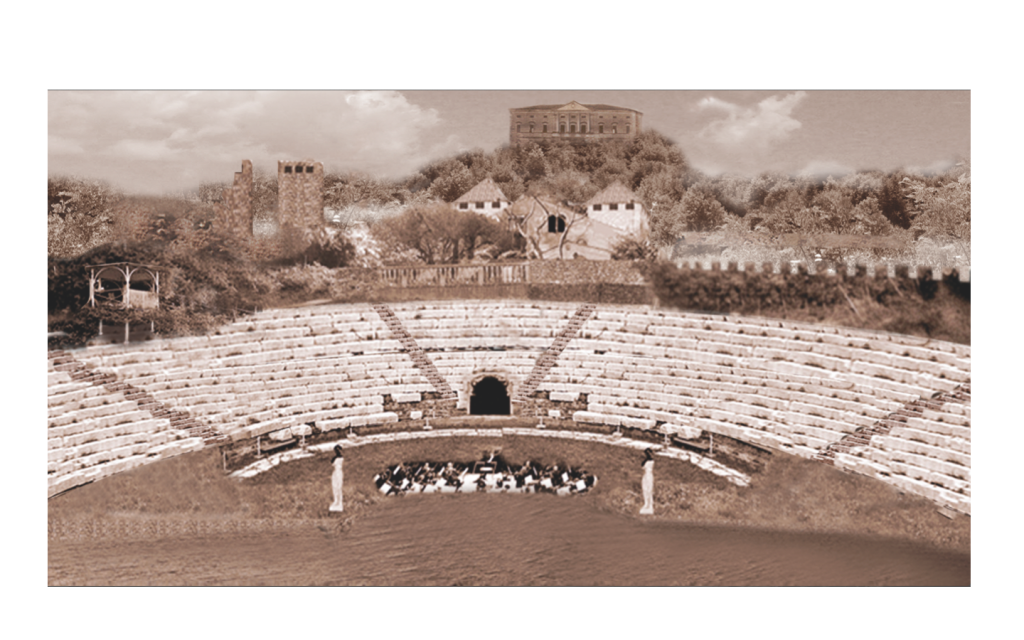
HOW THE ARCUGNANO AMPHITHEATER LOOKED LIKE BETWEEN THE END OF THE 19TH CENTURY AND 1934 IN THE DOCUMENTS OF JUDGE PERTILE, SON OF THE TENOR AURELIANO
“ Acoustic improvement. Thanks to the work of the Countess Querini, a notable narrowing was carried out at the hunting lodge called Boaria di Villeggiatura, on the banks and in the slopes of the Arcugnano amphitheatre. The maintenance of the banks will be entrusted to the knight. Maltarello already manager of three city theaters in the Anti Donà, Palazzo Giustiniani, at Palazzo Porto and in Arzignano. In the stalls the knight has already taken steps, at his own expense, to replace those brick tiles damaged by roots, brushwood and cart wheels.
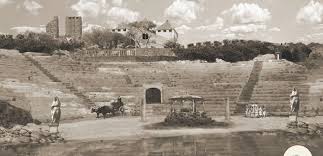
The old ox stable under the two towers of the former Templar commandery (one of which has practically disappeared) of the village becomes the temporary, guarded accommodation for the guests’ horses. The access walls to the stables have already been repaired in the same original style similar to that of the Imperial Box (demolished in the 1970s). Cavalier Maltarello has assured that he will plug the losses of the aquifer basins while also restoring the correct flow of the water from the ancient conduit which has visibly derailed, furrowing the ground up to the cave of the Spartan slaves and as well as the base of the Juturna fountain. This last operation is necessary to restore the ancient pilgrimage which allowed travellers, after leaving the small church of the commandery of the Templars of Tormeno, crossing the lake, to reach the thermal outlet” . These are the words of Aureliano Pertile. THE Tenor Euganeo-Berico from Vicenza by Arturo Toscanini, then administrator of the Fabbrica Reale Maltarello spa. The tenor will take over from Luigi Maltarello who in turn took over from Antonio Fogazzaro.
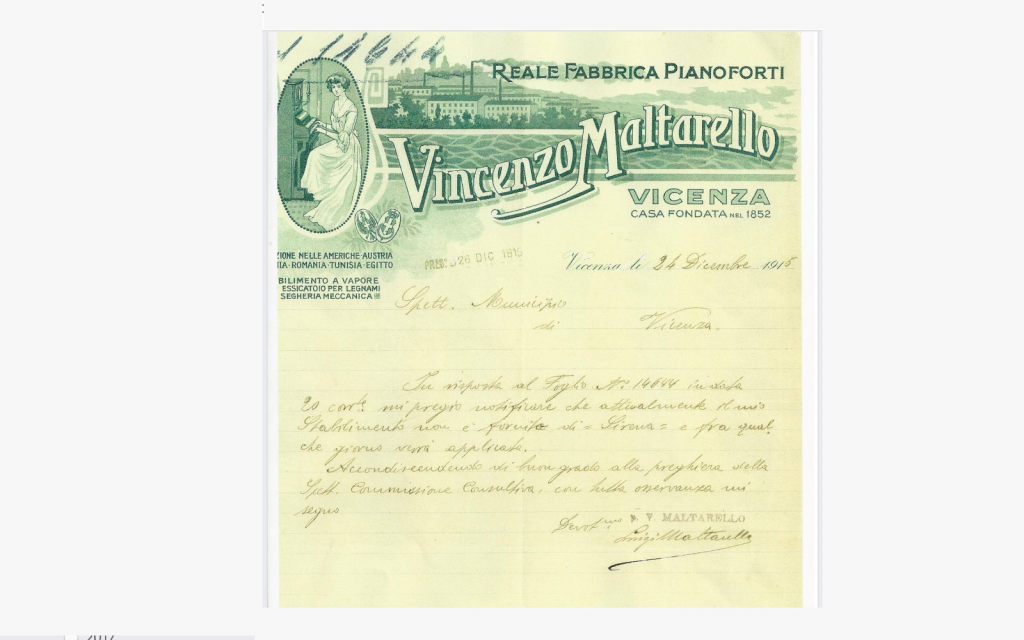
MALTARELLO-ROSENFRANZ – PIANO – BECHSTEIN BERLIN. A long collaboration never in competition. Suppliers of sound woods and strings for Elena Capito Bechstein, the Maltarellos , of the Habsburgs, who became suppliers of the Royal House of Savoy, with the pianos produced in Vicenza, in Venice at the Giudecca, in Dresden or assembled in Vienna, determined what for the theaters they were equally the official Bechstein suppliers to the Tsar, to the Queen of England at Buckingham Palace , at Windsor Castle in Berlin and in London, creating among the most illustrious and worthy of mention the “Wigmore Bechstein Hall”, the concert halls in St. Petersburg and Paris. The Maltarello brothers were the owners of the largest Rosenfranz factories within the city walls of Vicenza even for such employed personnel. In their Palazzo Giustiniani as in the villa of their patron Jacopo Cabianca , in Longa di Schiavon or inside the third factory in Corso Padova in Vicenza, they managed excellent music rooms. Their public Teatro Mattarello survived in Arzignano as well as the private one of the Anti Donà in via del Vescovado . The latter had a suggestive semi-submerged itinerant route under the island of the unfinished Palazzo Porto -Breganze. The Berico aquatic amphitheater in Arcugnano was the outdoor one.
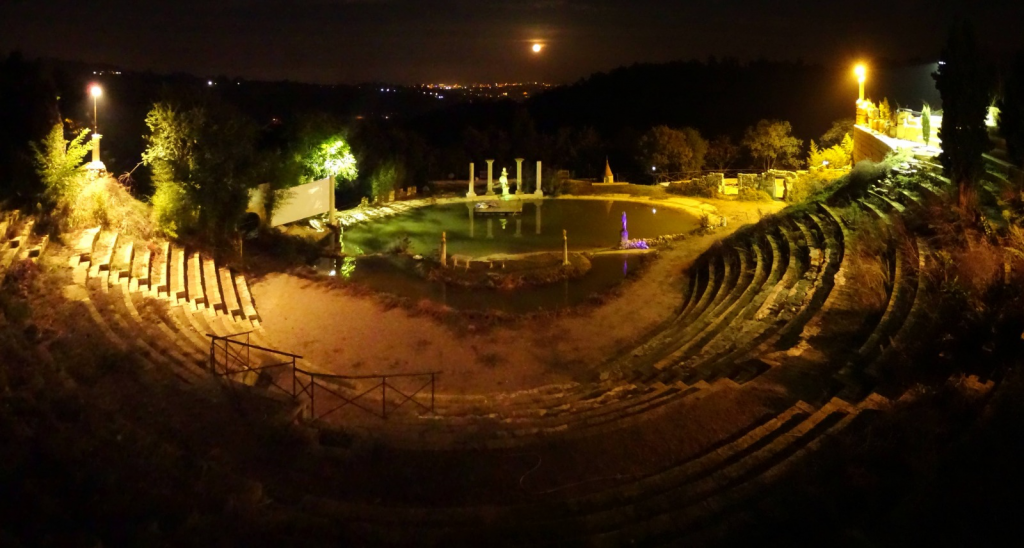
Testimonies say that the Maltarellos, owners and conservators of its theaters since their appointment by the Venetian architect Andrea Palladio known as “of the Gondolas”, also rehearsed in the night mists with the performers seated in the mystical Gulf and with the lecterns illuminated by the dim light of lanterns. The important instruments were stored in the gallery. With the increase in piano sales, many semi-finished Rosenfranz parts left the Vicenza factories and reached there without paying duty. In the basins of the amphitheater of Arcugnano, buyers often waited for days waiting for the squerarolo , a minor Maltarello, to call together sawyers, oarsmen and pegolini to assemble the purchased pianos.

At least until the middle of 1500, with Andrea Palladio, the Maltarello brothers were responsible for ferrying pilgrimages to the two Berici sanctuaries. In the memories of the Maltarello family, quite a few were still interested in visiting the pagan one managed by the ” pagus, country people.” locals. But only with the return to the Querini that with the advent of the piano piano buyers here came to their mooring. From below, they ascended 140 terraces of the theater enchanted by the magical sound, the aquatic surround that echoed inside.
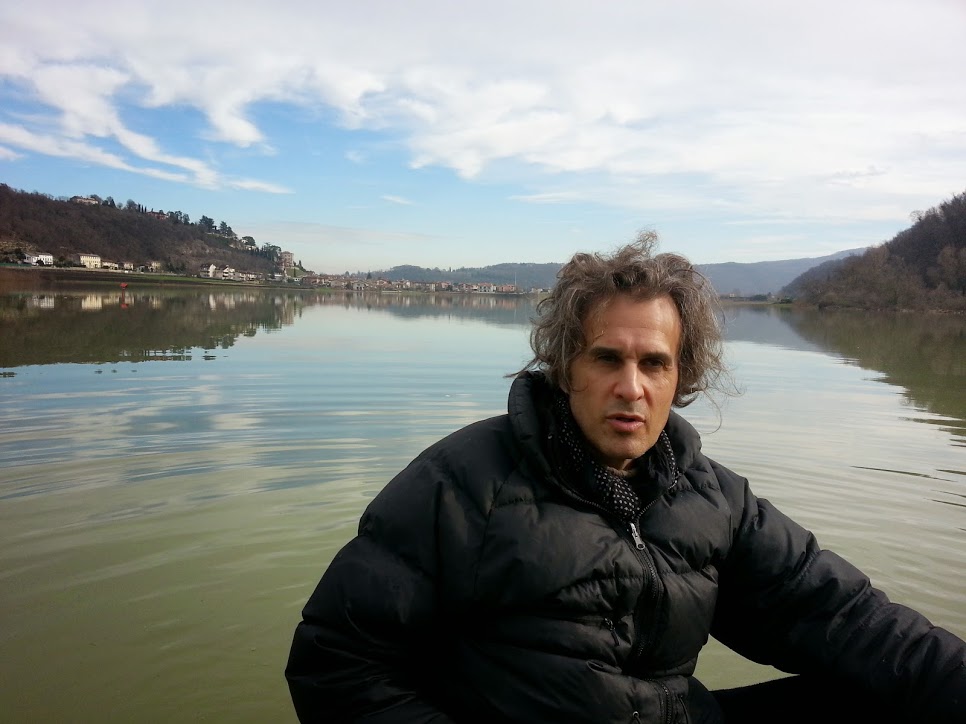
Today a similar sensation might remind the viewer of W. Herzoch’s film Fitzcarraldo . It can be enjoyed by sailing in some sections accessible from the Chioggia Lagoon (VE) to the former Querini dock which is located near the discovery by Gastone Trevisol of the remains of the marina and further up those of the corpse of the “Black Lady”. This exciting experience can only be done during periods in which the lake, with its bed normally cultivated with corn, is in flood. Once we arrive under the great theatre, accompanied by the music that Richard Wagner would recommend: The Liebestod which marks the imaginary arrival of his Tritan in the Fos bay.

And often when they reached the top of the theater, arranged between the terraces, the sales orders were transcribed to get their pianos. Sometimes those visitors loaded into their “bucintori” not only the upright pianos but also the concert pianos manufactured in the so-called ” Island ” of S. Francesco in Palazzo Giustinian -Zorzi- Maltarello-Baggio. In that remote Querini theater, in addition to Aureliano Pertile and the Maltarellos on Sundays, lesser-known pianists such as Cesare Apolloni etc. performed on the occasion of the trips. Among the purchasing customers, on the other hand, we remember the names of Ernesto Friedmann , Giacomo Orefice, Karl Lakenbach Josef, Engelsrath Rosa with Stella von Max Goldemberg, Sigismund Sonntag , Maximilian, Emma d’Augusta , Jungmann , Eleonora di Greitz, Rose Katz of Vienna , the Balboani accordion builders (with a factory in Corso Padova), the Polish Haschlaus Feighe Haschlaus , Teresa of Weinberger, Teresa of Auschwitz . They were almost all also shareholders of the then newly formed Banca Popolare Vicentina. There is no space here to report celebrating everyone’s lost stories. Some of them are buried in the non-Catholic cemetery which the people of Vicenza, after the war, until the 1970s, had shamefully transformed into a recovery site for engine parts and used oil.

The Venetian nobles and European royals who wanted to reach Vicenza and the Berica or Este coast where many of them had originated followed river routes. The guests reached the theater via the same waterway, turning left under the plain of the God Berginus. In the notes paid by Marco Polo to the Querini as rent for his Chinese shadow wife, daughter of Kublai Khan, reference is made to the Great Lake of Vicenza and its Amphitheatre. Elsa Marzotto dalle Ore, a record-breaking female sailor, landed here in a seaplane until 1934.
T he theatre, in addition to being private, unlike the many other open-air theaters maintained for a select few on the terraces, was located in a perched position. Not even the embankment was passable; in recent years the Americans, building the base, asphalted the embankment.

SAILING FROM VENICE TO VICENZA IN THE 17TH CENTURY A story like many others, part of events known to the patriciate but never forgotten by the people of Vicenza today. That is, when the center from which a large part of the European aristocracy was born was Este on the Euganeo Berica Riviera, at the exact distance between the point where Vicenza was to expand and the center of Padua and when the business was not illegal landfills or even appropriating the latifundium and thus cause the thousand-year-old waterways to die by stagnating them through the work of the Jewish-Venetian politician Daniele Manin.
L’inherited to the throne of Spain, Carlos María de los Dolores Juan Isidro José Francisco Quirin Antonio Miguel Gabriel Rafael de Borbón y Austria -This , Duca di Madrid was a partito of Franz Listz, of Marie d’Agoult, of George Sand,


Chopin’s lover.
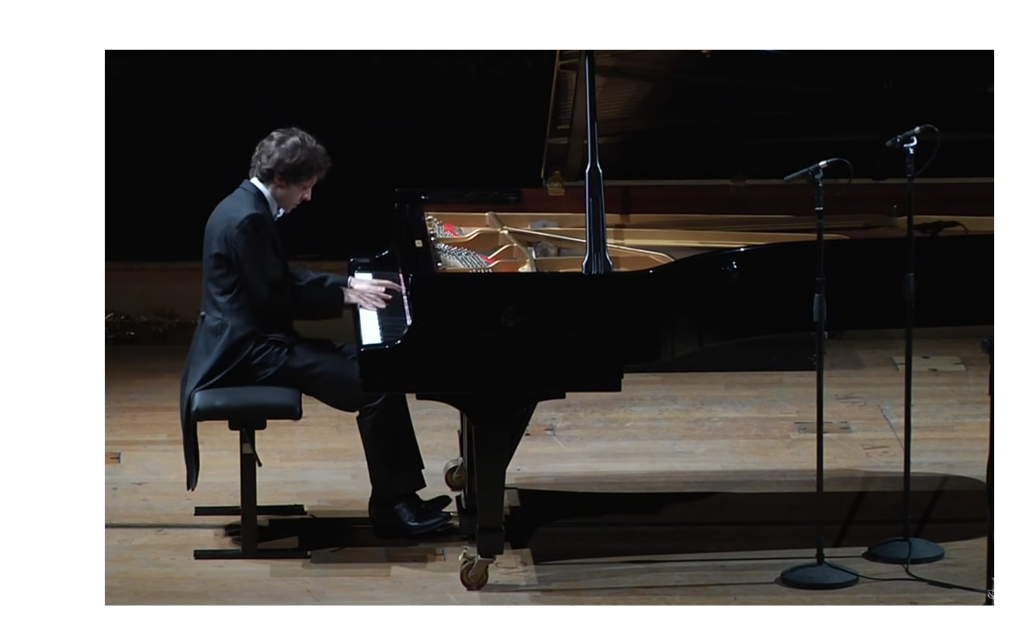
Especially Richard Wagner, who he felt could easily have been a second King Ludwig.


And this explains the continuous sunny stays spent in Bellagio. His salon conversations with the Prussian Kaiser Frederick III, General Ulysses Simpson Grant, King Albert Frederick Augustus of Saxony.

( Lubiana , Carniola, 30 March 1848 – Varese , Italy, 18 July 1909)
IN THE QUERINI AMPHITHEATER Carlos Maria from Venice aboard a four-oared gondola, in the company of his secretary, on Saturday 20 October 1883, sailing along the canals he headed out to explore following the path of the great composer Richard Wagner to pay homage to the places where the Maestro had Tristan and Isolde set . Carlo Maria of Bourbon visited the places and river basins dear to Wagner dressed in clothing in the style of the German master. The gondola made a brief stop, docking at the villa of Fedele Lampertico where, among others, waiting for the heir to the Bourbon throne, was the noble Gaetano of Thiene with his secretary and Fogazzaro with Zanella. After having lunch at the Bonvicini inn, Carlos Quirino de Borbón, of Austria-Este entered the bay of the Querini – Colonna Amphitheater on the Great Lake of Vicenza ( or called Longare-Debba) and ascended starting from the cave of the Spartans up to his media cavea kissing the ground of the Quiriniana island and from here among vineyards and silk moratoria along the Giuturna it reached the former Sanctuary of Janus (Villa Montanari).
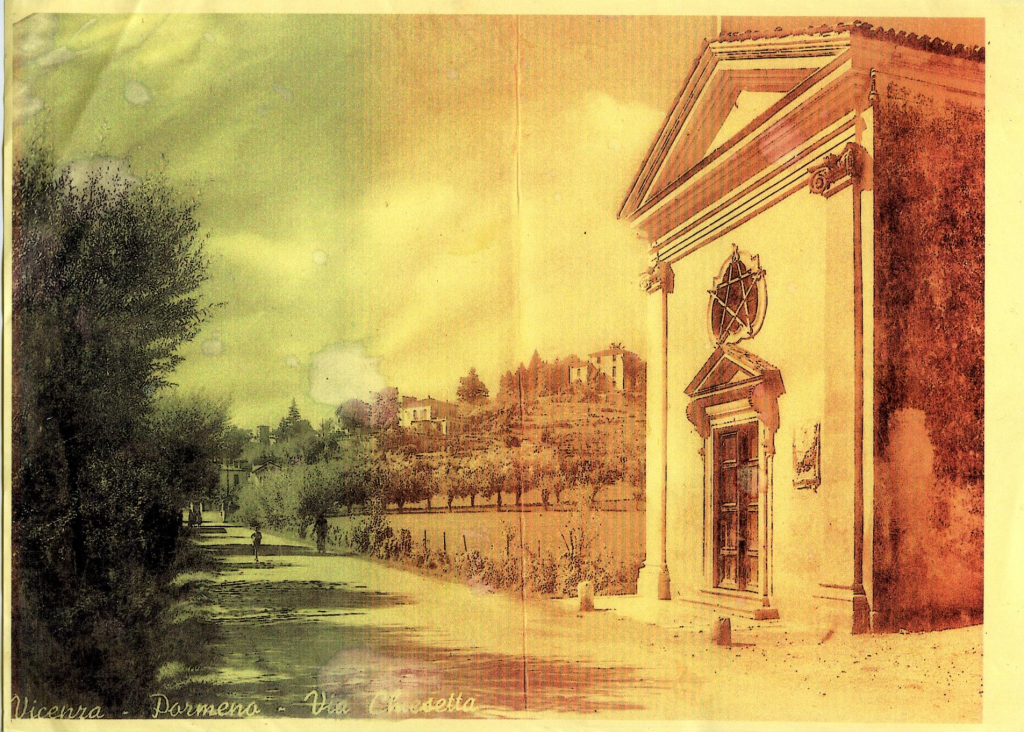
In the evening the heir to the throne of Spain stayed overnight at the Rossi’s in Debba, visiting the villa of S. Pietro Intrigogna the following day, thus passing without difficulty the palade of the Dazio hill [presumably the Capra (A. Lorenz) Rotonda hill] at the delta of the Borgo Berga river. He then stayed overnight at the Roma hotel in Vicenza. [cit. – Margherita Ungarelli Maltarello Fri 10/2/1878 + Royal Palace Turin 20/5/1905].

EUGANEO RIVIERA BERICA The amphitheater and its territory
There are many memoirists cited in the enormous “Berico Amphitheatre” dossier, whose presence here has been ascertained, who refer to the existence of the former Temple of Diana and Apollo (current Sanctuary of Monte Berico) and of the Sanctuary of the ancient Venetians with his safe haven. The professor. In his studies in the East, Maurizio Tosi has faithfully documented the source of departure from the Bay of the Knights Templar , thanks to his colleague Sebastiano Tusa of Maritime Archaeology, through a very rare parchment given to him in Oman written in the Frankish Sabir language. A unique one of its kind. The handwriting was of a Venetian captain who had not risen to Venetian nobility and passed to the Court of King Saladin

THE MARE NOSTRUM TO WHICH THE MEDITERRANEAN LINGUA FRANCA OF NAVIGATION SUBMITTED
THE BERICO AMPHITHEATER DIES WITH THE MEMORIALISTS WHO REMEMBER IT However, we will mention only a few: Tito Livio, Pliny , Galileo Galilei, Adalbert Lorenz, Francesco Tomasini, Andrea Palladio, Johann Wolfgang von Goethe , Alberto Martini, Antonio Fogazzaro, the writer and poet Giacomo Zanella, the Vicenza composer of German Cinema Bechstein, Giuseppe Becce, donor to the Berico amphitheater of the remains of his Kinotech, remains which are freed from a scattered library, an archive of 50,000 volumes from private collections including the archive of the Mioni sisters. Papadopoli-Wollemborg, that of Palazzo Maltarello dei Rosenfranz which today we know as “Carreri”.
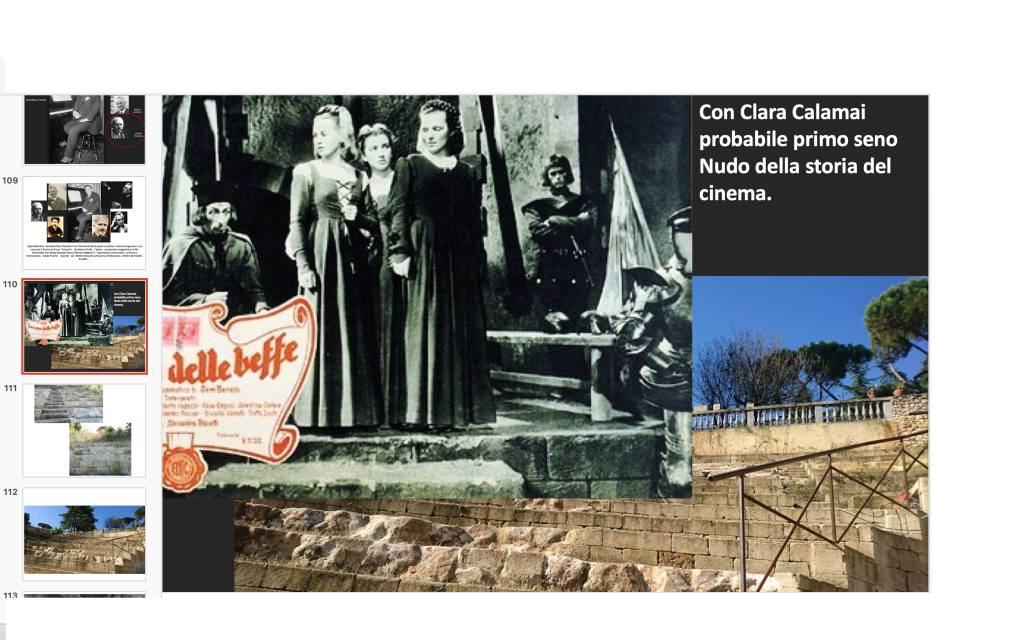
The theater is cited by historical CWGC members at the service of HM Queen Victoria , donor for her people, among other things not only of the maintenance of the Villa Montanari Amphitheater, but also of the “Military road” in the villa of Arcugnano. The Olympic Academicians , Prof. Mario Andreis and prof. Renato Cevese , the spy cartographer Freya Stark (“Grimaldi, Menton, Asolo: The Bay of the Amphitheatre ”), Maltarello’s patron Alessandro Rossi, Arturo Toscanini ‘s Tenor Aureliano Pertile, Margherita, Vincenzo and Luigi Maltarello jr and Luigi Maltarello sr. The Olimpic academics and prof. Renato Cevese and prof. Mario Andreis, scholar, teacher in Germany, Italy, in Vicenza and scholar of ancient German, author of 2000 publications in Italy, Austria including research on the lineal branch Andre is von Haselbeg as well as Venetian dialect expressions derived from German and cultured ” theater writer” prof . Remo Schiavo , the pianist and writer Gianna Andreis, the illustrator Antonio D’Agostini, the aviator, poet-memorialist Ettore Malosso, husband of the beautiful Giuliana di Bellagio, as well as SM Queen Margherita and Giosuè Carducci , R iz Ortolani with his wife Katyna Ranieri, and Dario Fo ; due to the features of its workmanship recognition of construction techniques attributable to the structures built by those Spartans of Prince Cleonymus it is necessary to mention the commitment of the architect. Giuseppe Dalla Massara . These are just some of the most well-known names of those who reported the existence of the Berico Amphitheater of Arcugnano of the nobles Querini-Colonna-Grimani-Grimaldi-Dalle Ore and the beauty of its basins.

In the 1st century the remains of what was the sanctuary in the enormous amphitheater on the bay of the oldest lake in northern Italy passed to the Berga theater in Vicenza. At the end of the 3rd century the people were definitively prohibited from performing (although in private, exactly as happens today with COVI19, for those who belonged to a certain social rank the listening rooms as well as places of pleasure and conversation salons were open). However, Andrea Palladio had time to take over the Berga theater and present it to us in its magnificence. But once again the people of Vicenza proved insensitive and this time they decided to build their own homes inside. His statues, having passed through private properties, ended their third passage of territory ingloriously piled up on the ground and without descriptions in the garden of the Olympic Theater under the windows of the Academy.

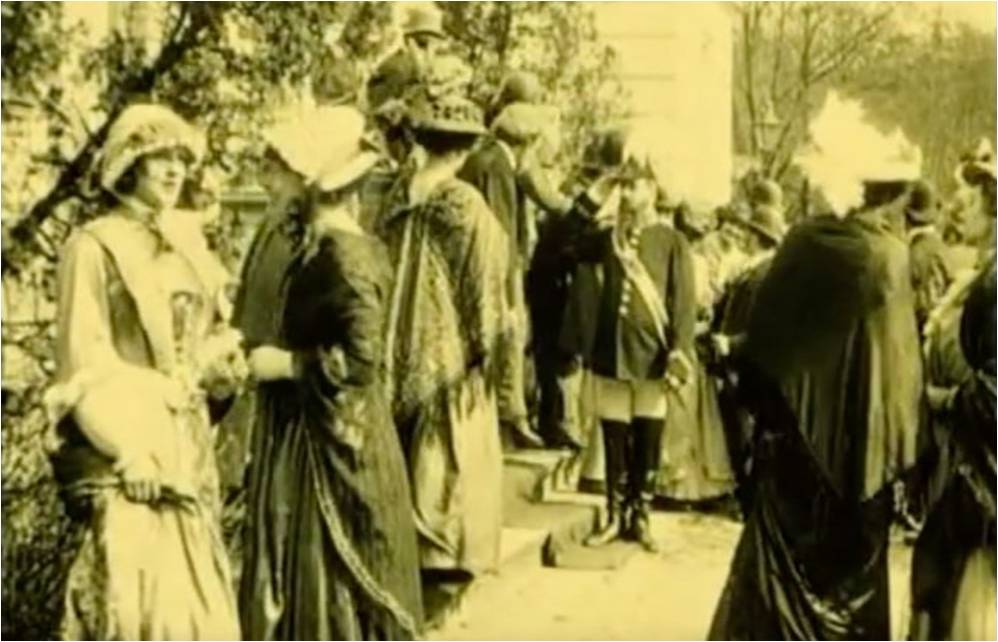
The amphitheater with the villas of the Querini, Pasini-Franceschini-Salasco-Colonna, Margheritoni-Nordera (Monte Giove escarpment north-west of the amphitheatre) overlooking it and its terraces and basins continues to provide evidence of an ancient civilization pre -Roman as well as Roman. Franco Malosso von Rosenfranz took over from his father as curator of the Mioni Papadopoli Wollemborg archive as a boy , immersing himself in the study of the place with the illustrator Antonio D’Agostini who took the first ideas for his tables from the properties of the English Royal Family and from the passage of Richard Wagner representing the tragedy “Death of Love” of Tristan and Isolde . Most of the investment in preserving these structures as they once appeared and as we see them today is due to donations from his family and local volunteers.
ONE OF THE MOST BEAUTIFUL AND ANCIENT IN THE WORLD IN ITALY: “ IT’S CRAP TO BE DEMOLISHED ” commented JACOPO BULGATI D’ELCI (DEPUTY MAYOR OF VICENZA never elected by the people of Vicenza who boasted of being among the theater’s detractors and of having organized its its debuggin). The Hon. Donazzan: You will no longer be deputy mayor. The Honorable Matteo Cerebron defined him as “the Tysico Bulgarini”. In reality, the young man had never visited the amphitheater and indeed there is written evidence that he thought it was a publicity stunt with mayoral candidate Flippo Albertin’s praise of the amphitheater . In fact, there are many who think that all those full-page advertisements on the real or fake theater were a joint idea to advertise for free in the manner of Amada Lear. He even went so far as to write in the press “It’s an offense to the Palladian style of the city”. It is clear that these were words dictated to the young man who, despite being a good communicator, did not even realize that Palladio himself cited that theatre. Someone pointed out that when Joe Adonis wanted to host a film festival he hadn’t been born yet.

THE REPLY of the NOBEL PRIZE , DARIO FO to the young man’s words [ed] it is curious how the ” uncoverer” deputy mayor of Vicenza Jacopo Bulgarini d’Elci erupts his indignation for the Berico Marittimo Amphitheater (over which he has no administrative competence ), neglecting, or rather, obscuring, [the building abuse ed.] of Borgo Berga where [vice versa has the expertise].
An offense that falls on generations of scholars linked to the history of Italy , because a corrupt state that operates in the absence of the most basic rights can no longer be called a “country” but a “REGIME”. But who wasn’t young! Young people are young because they can go from one extreme to the other! concluded the controversy “ Amanda leariana ” Rosenfraz not at all offended despite the much love spent to defend the structure.
History will judge the dream we had. That of cleaning it from twigs and finally making it accessible to everyone – In the face of those like the teacher. and councilor Isabella Sala . she believed that it should remain a private “temple” for us. On the subject there is a document registered in 2014 which details the recovery work proposed as a donation by the associations and an end to the controversy! An amphitheater has been present here for millennia and cannot be reviled by detractors who on average live less than 100 years. Franco M. von Rosenfranz.
MAURIZIO TOSI – FREYA STARK-SEBASTIANO TUSA-GIUSEPPE ANTOCCI -The years 2016-2019 were characterized by the discovery of at least three important theatres. Halaesa , dating back to the Hellenic era, recovered under the aegis of Sebastiano Tusa (colleague of the twenty-year classifier of the Berico delle Querini Colonna amphitheater, prof. Maurizio Tosi). The other was that of Pietravairano , which was followed by that of Volterra.
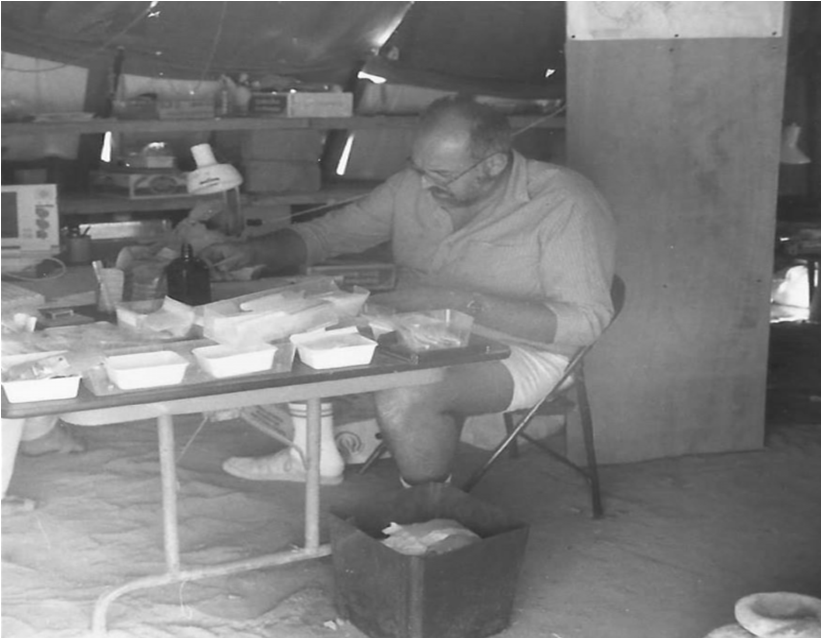
The comparative analyzes of the materials classified by the twenty-year work of the world guru of Archeology prof. Maurizio Tosi demonstrate how the theater had always existed, before its upheaval, immersed in its extraordinary maritime and then river-lake landscape. Its complete blocks, despite a part having been moved upstream among the cedars of Lebanon, are still maintained in the area and makes it unique in the world.

JULIET, A TEENAGER FROM ARCUGNANESE MIGRATED TO VERONA The story of a girl named Giulia , whose text was translated by her companion, the Templar knight Adalbert Lorenz in force at the doors of the Amphitheatre, who signed himself Romeu s Pellegrino , present in a correctly retranslated legacy , has allowed us to give a face to what until yesterday was considered a legend narrated by the writer Luigi Da Porto, whose ancestors were owners of the entire Arcugnano area and also of properties in Vicenza. In particular, it appears certain that in 1307, writing to this thirteen-year-old educated girl, probably an orphan, whom he called the Lanuginosa girl, i.e. Giulia , from the Greek (a codified language adopted by the couple in addition to the current hoc and medium German) he recommended her to save herself by reaching the Veronese EMILEI family also passing through Montecchio and beyond. For centuries the term had been translated by erroneously interpreting it as EMIGRI in Verona and not EMILEI IN VERONA. The careful verification of the document and the respectful translation of the real name of the Lanu ginosa is due to the study of Franco Malosso Maltarello von Rosenfranz verified by the prof’s team. Maurizio Tosi and concluded in his final report.
NOT JUST LEGEND IN VERONA The certified verification has finally put to rest the controversy of those who claimed that it was an exclusively Vicenza story. The Emilei were a family that controlled Verona. The heirs had to deal with the councilor Antonio Avena.
More and in-depth details are present in the Book: Juliet & Romeo the Double Enigma unsolved in Arcugnano.
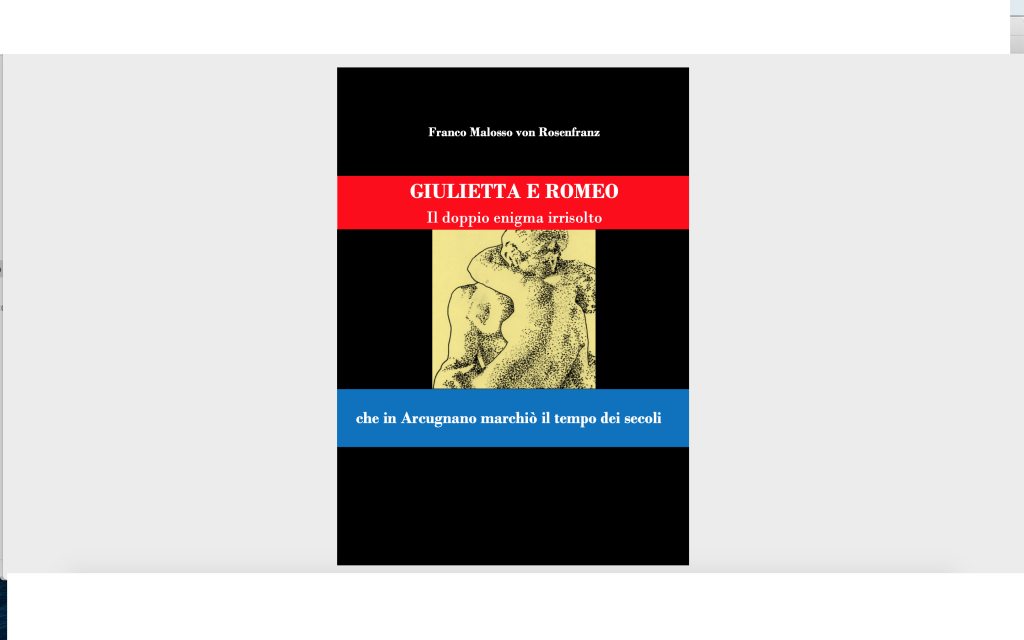
FINAL CONSIDERATIONS Contrary to what has been spread for advertising purposes, playing for a long time with unpreparedness between TRUE or FALSE in the way of creating free advertising pages by pretending a dispute between the Conservative and the Mayor of Arcugnano as a model of the advertising launch conceived by Saldaor Dalì and Davis Bowie playing with the ambiguous sex of Amada Lear, the amphitheater does not need such publicity. Anyone who visits it immediately notices its antiquity. The territory of the colossal BERICO DEI QUERINI AQUATIC AMPHITHEATER IN ARCUGNANO which overlooks the Fontega has never been “discovered “ as due to ignorance, incompetence and reasons of State some unspeakable and uncultured people have made its reuse appear. It HAS EXISTED FOR THOUSANDS OF YEARS (data ascertainable by any technician) despite the clearly visible signs of the 1117 earthquake having heavily affected its profile, forcing the Querini to limit it compared to its original dimensions. Earthquake which led to the collapse of the “Grotta degli Spartani” ( the shelter of the Spartans ed.) and its ambulatory, traces of which were lost after they were used to welcome pilgrims and sheep of wandering shepherds. Unique in the world, the Berico amphitheater is considered one of the 10 most spectacular wonders among the stable aquatic ones that still exist .
IN THE PLANET ITALY DEVOURED BY THE MAFIA since 10 July 1943
In 2016, its curator was the victim of threats, intimidation and finally of an ongoing millionaire extortion attempt while the theater was fiercely contested between two different Italian mafia-style criminal organisations. Well, five Italian magistrates, in place of the technicians and experts, without a CTU verifying their assertions, by accepting accusations of institutional offenders and a serial extortionist, have arrogated to themselves the power to even define it as a “SOUNDBAL FALSE”, thus offending the reputation of everyone the great memoirists who cited its existence over the centuries without however ever proving where such beliefs come from and through what TRUE evidence. The institutional extortion for the possession and control of the place, the intimidation and threats of which numerous scholars were victims at the time of writing this editorial are still ongoing.
THE DEBUGGING OPERATION Planned by the institutional gang of extortionists, however, it ended up giving enormous visibility to the provocation. Because it was a provocation.
THE PROVOCATION of 2016 to which the classification team led by prof. Maurizo Tosi had to react by putting the new Minister of Environmental Heritage in a bad light. Franceschini and on the Head of State Sergio Mattarella and on a local Sicilian community. An extortionist direction, that of lace. This request was sadly known in Italy and it was made to believe that the request for the enormous bribe was their fault. So crowds of keyboard lions wanted to express their opinion without documenting themselves and widening the scope of the slander. Others, even today, following the inaccuracies that were dictated by the cheaters, generated in the press of the time, perhaps consciously, this strategy which thus supported the launch by presupposing that the theater was Roman rather than governed by the ancient Venetians with Spartan manpower (and a narrowing ordered by the Querini) as shown by the classification of the Tosi team. The result was that between May and November 2016 the audience for the theater and its superior Masseria Fortificata climbed the record charts. Obviously the association that held the rights to the version, considering itself damaged, threatened the institutional cheaters without then having them taken to court, but in the meantime the launch of the Theater classified as Romano “YES” or Romano “NO” had already taken off.
Indeed, for a while, thanks to an event with costumes inspired by the ancient Romans and slaves who spoke in Latin and Greek, the public believed they were truly in front of a theater of Roman origin in what, before being classified as an “amphitheater ”, was a very ancient bay that enclosed the Sanctuary of the ancient Venetians where the ancient Roman style shows, compared to its use as a temple, were sparse. However, when the classification error came to light, even the magistrates expressed themselves by calling it Roman (in imitation of a Roman theater when none of its technicians had ever called it that) in the trial which ended with a conviction which ended without the verification of the alleged accusations. A factor that however managed to maintain the aura of a successful launch thanks to the astonishing natural beauty of the structure.
Ideapolis association editorial staff Service by Amedeo Gagliardi 2021 / 2022/ 2023 2023
GERMAN
THE MOST BEAUTIFUL AMPHITHEATERS and other open theaters
a Amphitheater , amphitheaters , amphitheater , amphitheater Porto degli Angeli , Bellini , Celts , Julia und Romeo , Kelten , The Black Lady , monuments in Vicenza , Mostra di Vicenza , Porto degli Angeli , Tempelritter , Templars , Tutankhamen Caravaggio Van Gogh , Vicenza
Hello everyone, today I would like to dedicate myself to a wonderful topic… the natural theaters of this world… it is always incredible how much natural beauty our planet has to offer…
I would like to start with the Red Rocks Amphitheater in Red Rocks Park, which is located at the foothills of the Rocky Mountains in Colorado (USA).

This park used to be called the Garden of Angels, probably because of its enchanting structure, in which “messengers of God” certainly had a hand in it…
Its open-air stage, known for its excellent acoustics, is embedded between two 100-meter-high sandstone cliffs and can accommodate almost 10,000 people.
The stage was completed in 1941, but the first public performance took place there only 6 years later. Some of the most famous artists who have performed there include U2, The Beatles, Bruce Springsteen, Eric Clapton, Sting, Incubus, Depeche Mode and Mumford & Sons.

Since 2003 there has also been an underground visitor center with a restaurant and bars as well as a “Hall of Fame” for the artists who have performed there. The newly created center provides information – including in short films – about the geological and musical history of the theater.Annunciabout:blankSEGNALA QUESTO ANNUNCIOPRIVACY
When listing the most beautiful amphitheaters, how could I leave out the largest and most impressive open theater in Northern Europe – the “Porto degli Angeli” amphitheater ? The largest unique natural theater and stage in the Oligocene era in the world.
The exceptional acoustics of the theater, together with the vibrations of the entire bay, create a natural sound floor. By 1300 it was gigantic and the largest of its category in Northern Europe. It is located about 150 meters above the level of the former Venetian Lake Fontega and is 120 meters in diameter and measures 25 rows of steps.
The theater and stage are still in the water and the performances take place on a raft dedicated to the famous Italian painter Giovanni Bellini.
Its history ranges from the Celts to the Knights Templar to restoration work in recent years.
It is one of the most controversial and impressive theaters, both because of its nature and its troubled past.

It is located in Vicenza, a beautiful small town of Northern Italy, 40 km from Verona and about 60 km from Venice.Annunciabout:blankSEGNALA QUESTO ANNUNCIOPRIVACY
A very beautiful and extremely interesting exhibition is currently taking place in Vicenza. This exhibition is called “Tutankhamen Caravaggio Van Gogh” and tells of the Egyptian period up to the 20th century and shows beautiful pictures by Cavaraggio, Rembrandt, El Greco, Titian, Tintoretto, Guercino, Veronese, Monet, Klee, Matisse, Kandinsky and many other. After visiting the amphitheater, be sure to visit the basilica to see this wonderful exhibition.
The “Porto degli Angeli” amphitheater, which can be compared to a paradise on earth, can be reached via the “Purification Path of the Soul” (Guillaume de Digulleville). It is an approximately 10-minute walk that leads from the bottom of Via (Lago) della Fontega up to the amphitheater. This path is decorated with numerous statues that accompany visitors on their “purification path” and show them the way to the theater above. Among the natural trails, this trail is the most fascinating and, above all, unique in the whole world.
It is currently not open to the public as it is still part of the private cultural heritage of the Italian state.
On May 23, 2015, the theater will no longer be in private hands. It will open its doors to the public for the first time on Saturday, May 23, 2015 at 9:00 a.m. on the occasion of Expo 2015 and the Giro d’Italia cycling race and will remain open from then on for visits, concerts and other performances.
The name “Porto degli Angeli” most likely comes from the passage of the famous Italian painter Giovanni Bellini, who depicted the area around the theater along with all his impressions in his painting “The Holy Allegory”.

Adsabout:blankREPORT THIS ADPRIVACY
The theater is also called Teatro di Giulietta because historians have identified it as the actual birthplace of “Romeo and Juliet”. This is “Romeo and Juliet” by the Vicentina Count Luigi da Porto, whose novel became world famous thanks to Shakespeare.
Not everyone knows that love affairs of a beautiful girl took place in this theater, whose beauty was known even to the lords of Montecchio. This beautiful girl disappeared one day without a trace and there are numerous versions about her disappearance. This girl is also called the “Black Woman of Lake Fontega” (“La Dame nera del lago della Fontega”), about whom an entire book was even written. Bellini even depicted her in his painting “Sacred Allegory”. In the picture below you can see what is supposed to be Julia’s balcony, which is the location of the theater.

The view from this theater is extraordinary and scenic. But this is not the only special feature of this theater. It is the only remaining amphitheater with half of it submerged in water. This water surface allows the sounds to enjoy exceptional acoustics, which carries the nature of its special rows of steps.
The theater has a raft similar to that of the painting “Sacred Allegory” by the painter Giovanni Bellini, who depicted the area around 1500. Versions of Tristan and Isolde by Wagner, Nabucco by Verdi and the “ Cathedrale Engloutie ” by Debussy have been performed in this wonderful bay .
The theater does not require electronic amplification. The sound reflected on the surface of the water allows for an acoustic transmission well over 4.5 times greater (even 6 times more if the wooden pier on which the orchestra is located is appropriately tilted by a certain degree of angle).Annunciabout:blankSEGNALA QUESTO ANNOUNCIOPRIVACY
Around 1700, its owners, the Noble Montanari, even planned two cisterns, located on the north and south wings. These were able to introduce fresh water into the pool so that the water temperature of the pool could be changed. This inventive trick made it possible to dampen and optimize the reverberation of the sound. And not only.
It was also intended to vary the sound and its intensity by increasing the depth of the water with the help of the nearby stream (eventually becoming “Via Fosso” = “ditch path”; now “Via Giardini” = “garden path” in honor of the “Brolo Veneziano” (= park-like garden at the house) of the historic Villa Montanari, which towers over the town). His pelvis was emptied through the opening of two large valves and was just as quick.
In 1853, Vincenzo Maltarello made this impressive theater his personal place to promote and test his pianos. He described it as a mysterious natural theater in competition with human perfection due to its 14 spectacular natural series of steps, which were hidden for a time and gradually reappeared through the gradual withdrawal of the water. Its “Mystic Gulf” was a replica of the harbor basin below, the ancient river pier also called “Fontego Veneziano”; a very active river port around 1500.
The theater was in fact located on the border of the ancient “Mare Berico” (Sea of Berico). The lost sea that reached as far as Vicenza. After the disappearance of the sea, it became a quiet lake crossed by merchant ships as well as “bucitori” (= golden barges) used by the Venetian elite who sailed along the Bacchiglione river and the “Canale del Bisatto” to their To reach villas that were located in the Vicentine Hills.
After 1500, the “Serenissima Repubblica di Venezia” decided to drain this lake due to its need for wheat. Since then, the lake has been subject to various attempts at draining it to turn it into a field for growing corn.
The last attempt took place in 1934. Nevertheless, this area turns into a lake again, especially in the winter months. The structure of the “Porto degli Angeli” amphitheater is Italian, perhaps imported from the travels of the Celts. With its circumference of a good 120 meters, it is estimated that it could accommodate up to 2,300 spectators. Its history goes back thousands of years.
After the Miocene, its anatomical seats recall the ancient Italian amphitheaters, founded even before the Roman period, which are usually characterized by a much more military appearance. Analogies to this can be found in the discovery of the amphitheater of Villa Dionisi near the port of Brindisi, as well as in other Italian theaters.Annunciabout:blankSEGNALA QUESTO ANNUNCIOPRIVACY
I had the opportunity to visit the theater before it officially opened and I have to say that I find the place magical.
The energy you feel here suggests that it is a place that has a magical appeal. In fact, this place is associated with the constellation of Virgo. He holds a secret that the Knights Templar wanted to pass on to him… as a silent witness to their discoveries and secrets…
So if you want to discover something unique, I advise you to visit this beautiful and mysterious amphitheater, the oldest natural theater in the world…
I wasn’t allowed to publish official pictures of the theater yet, but I was able to find an antique picture of the theater on the internet that captures the theater well and I was also allowed to use my private pictures of the theater to reflect the magic of this place.

In the photo below you can see the surroundings of this beautiful theater that takes your breath away. The small figure in the foreground of the picture represents “Dama Nera”, which has become one of the symbols of the theater.

Another theater worth mentioning is the Theater of Albano Lazio , which, as the name suggests, is located in the Lazio region of Italy. This theater is accompanied by a thousand-year history and enjoys a charm of myth.

The Albano Lazio amphitheater is also called the “Small Colosseum” in ancient writings. In fact, it is located near Rome and therefore close to the well-known Via Appia.
Its stands are made of tuff and its elliptical base and auditorium can accommodate around 16,000 people. When you think of this theater, the Legion of Septimius Severus immediately comes to mind. In fact, this theater was built for both military and entertainment services. Its stands are 60 meters long and 7 meters high. Near the theater are also the catacombs and the Baths of Caracalla.
The Flavian Amphitheater is particularly close to my heart. Located in Pozzuoli in the province of Campania, it is one of the largest amphitheaters in Italy. It can accommodate up to 40,000 people.

Adsabout:blankREPORT THIS ADPRIVACY
Its main axis extends in all four directions and is embedded in the green hills of the Solfatara between the vineyards. It is made of tuff and volcanic material. What is particularly interesting about this theater is its underground arena.

The Arena of Verona: When listing the natural amphitheaters, how could one forget the Arena of Verona? It is the third largest surviving amphitheater and its 45 tiered tiers can now accommodate 22,000 spectators.

It was built 30 years after Christ and was located outside the Roman city walls of Verona. In Roman times it could accommodate up to 30,000 spectators and was used for gladiator fights and competitions.
The exterior facade is made of white and pink limestone. The last Cathar execution took place there in 1278, but it was used again as a theater during the Renaissance. This has happened regularly since 1913. On August 10, 1913, his opera Aida was performed to mark Verdi’s 100th birthday.Annunciabout:blankSEGNALA QUESTO ANNUNCIOPRIVACY
Due to its excellent acoustics, the arena was quickly able to establish itself as a concert hall. Nowadays, opera performances and rock concerts take place here, especially from June to August.
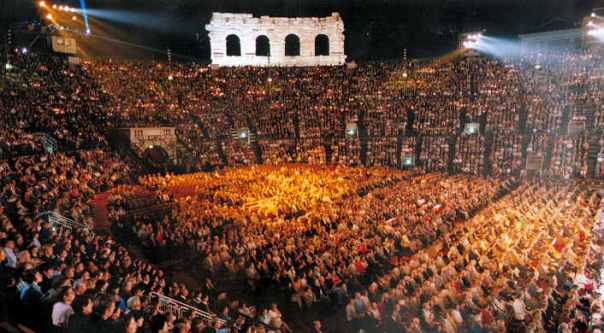
As we move away from Italy we immediately come across Greece and its Acropolis .

The name “Acropolis in Athens” is derived from the Greek word “upper city of Athens” and is probably the best-known representative of the city fortresses of ancient Greece known as the Acropolis. After its destruction by the Persians, Pericles had the oldest part of the city of Athens rebuilt by the architects Iktinos and Kallikrates Mnesikles under the direction of the famous sculptor Phidias. On the flat 156 high hill there are various temples built between 467 BC and 406 BC, including the Pharton Temple, which contains a statue of the goddess Athena. Athens has been part of the UNESCO World Heritage Site since 1986.
And who doesn’t think of Taormina when they talk about amphitheaters… Who hasn’t dreamed of Taormina? Annunciabout:blankSEGNALA QUESTO ANNUNCIOPRIVACY

Aside from the beautiful city and its location, this enchanting city on the island of Sicily also has a magnificent amphitheater to offer.
The theater is the second largest in Sicily after that of Syracuse. Although it is often referred to as a “Greek theater,” it is a Roman structure built in the 2nd century BC over a theater built by the Greeks in the 3rd century BC. When it was converted into an arena, its auditorium was significantly expanded again.
The theater was originally used for performances by actors. Nevertheless, even after its renovation, gladiator fights and animal fights still took place there.

The theater is 120 meters long, 50 meters wide and 20 meters high and is divided into a stage, orchestra and grandstand (cavea).
Because it was built on a Greek theater, it is embedded into the hillside, whereas Roman theaters are usually free-standing theaters. The steps of the stands were partially carved into the existing rock and already offered space for around 5,400 spectators. Of interest is, among other things, a marble base with an inscription stating that Tauromenion won a horse racing title at the ancient Olympic Games.Annunciabout:blank
So my dears, that’s it from me for today.. I hope that my report has given you a little dream and the desire to visit one or the other theater.. I will continue on my journey to… to discover more beautiful buildings and natural landscapes or other features of this world and then finally keep you up to date with a new article…
Until then… all the best… your Brigitte Sommer,-)
MANAGEMENT OF THE BERICO QUERINI COLONNA AMPHITHEATER OF ARCUGNANO
On 31 December 2019 Franco Malosso von Rosenfranz resigned. The management of the Theater and Juliet’s Castle passed to the theatrical costume designer Emma Vittoria Falcone, cousin of the Magistrate Giovanni Falcone killed by the Mafia. The 20th later:
1 Andrea Palladio – Maltarello Brothers
2. Antonio Barban -Capra Vincenzo Maltarello 1840 -1847
3 Colonnese prince Almerigo, 1849 1850
4 Dalle Ore nobile Ermengarda Maria Amelia and Vincenzo Maltarello 1851
5. Cav. Vincenzo Maltarello 1851 -1868
6. Valmarana count Angelo 1868 – 1899
7 From the Hours Ermengarda Querini 1900- 1927
8. Contessa Ermengarda and Giulia Querini gen. Grimaldi 1928-1930
10 Count Marzotto Luigi, Ottorino and Alberto 1930 – 1931
10. Querini Giulia Adriana i 1931- 1939
11 Giuseppe Becce Aureliano Pertile 1939 1943
12 Aureliano Pertile 1943 – 1947
13. Luisa Mioni 1947 1975 (Great Lake Longara / Honoraria Fontega)
14th Jan. Ettore Malosso 1976-1986 (Logos Conservator)
15 prof. acc. Franco Malosso von Rosenfranz – 1986 – 1989 (Logo Conservator and – Archivist)
15. Nadia Ludya von Thurn und Taxis – Franco Ma. by Rosenfranz 1990
17. prof. acc.Franco Malosso von Rosenfranz 1990 (+2008 -2009 with EL Seymour) 2010- 2015- and since 1997 prof. Maurizio Tosi until February 2017
18. prof. Filippo Albertin 2015-2016
19 Otello Gobbin 2016 – 2019 – acc. Franco M. von Rosenfranz (2019 also Arch. Giuseppe Dalla Massara)
20. Emma Falcone at 2019
Bibliography and Sources
The Janiculum Veneto of Arcugnano by Franco Malosso von Rosenfranz edited by Maurizio Tosi – Equipe Tosi ed. 2021 ISBN. -979-12-200-2767-0
Editorial by the Ideapolis Amedeo Gagliardi association @ 20121
Commenti recenti